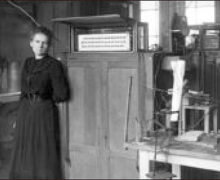
La estatua de la Libertad y la Máquina de Coser Singer
The Statue of Liberty and the Singer Sewing Machine
Cómo la viuda de Singer, inventor de las máquinas de coser, llego a ser el rostro de la Estatua de la Libertad
Isabella Eugénie Boyer nació en París el 17 de diciembre de 1841, de padre africano y madre inglesa, esto determino su belleza natural y especial, con un rostro casi perfecto, por esto al cumplir los 18 años se transformó en una reconocida modelo publicitaria.
En sus desfiles conoce al principal anunciante, Isaac Singer de 52 años, fabricante de las reconocidas máquinas de coser, con quien se casa en New York en 1863, al cumplir sus 22 años. Luego de 12 años de matrimonio y 6 hijos, Isaac Singer fallece, convirtiéndola a sus 34 años, en la mujer más rica del Francia.
Cuatro años más tarde se casa con el holandés Víctor Reubsaet, quien era un cantante y violinista de éxito internacional y que, a pesar de ser de clase media, el rey italiano Umberto I lo nombra Duque de Camposelice, por lo que Isabella se convierte en Duquesa.
En una reunión palaciega conoció al famoso escultor francés Frederick Bartoldi, que había aceptado la propuesta de crear una estatua, para que Francia regalara a los Estados Unidos en honor al centenario de la independencia del país.
La idea del escultor era una estatua gigante representando a una mujer sosteniendo una antorcha en una mano y placas en la otra, con la fecha de aprobación de la Declaración de Independencia de los Estados Unidos.
Al conocer a la Duquesa Isabella Boyer, Bartoldi quedó tan impresionado por su rostro que decidió usarlo como modelo para su escultura, previa aprobación del Duque Reubsaet.
El Duque murió en 1887 y en 1891 Isabella se casó con el coleccionista de arte Paul Sohège, con quien vivió hasta su muerte. Isabella Boyer falleció en 1904 a los 62 años y está enterrada en el cementerio Passy, en Paris.
Estatua de la Libertad
La guerra civil en los Estados Unidos duró de 1861 a 1865, es decir que para 1876 el país estaba en medio de la reconstrucción y, el objetivo del escultor Bartoldi era acabar en esa fecha para festejar el centenario de la independencia estadounidense.
En 1870, Bartoldi realizó el primer esbozo en terracota que se descartó, pero que actualmente se encuentra en el Museo de Bellas Artes de Lyon, la razón fue que Francia en 1871 entró en guerra con Prusia y debió ceder el territorio de Alsacia-Lorena al Imperio Alemán, por esto el proyecto quedo paralizado.
En junio de 1871, Bartoldi viajó a Estados Unidos para elegir el lugar donde se erigiría su estatua, para esto se reunió con el presidente Ulysses S. Grant, en Nueva York, quien concede a Francia la isla de Bedloe, (actualmente la isla de la Libertad), para erigir este monumento.
El trabajo no fue fácil y recién el 28 de octubre de 1886, (con 10 años de retraso), la Estatua de la Libertad fue inaugurada en presencia del presidente estadounidense Grover Cleveland, antiguo gobernador del estado de Nueva York.
Por lo tanto, en la isla de la Independencia en el golfo de Nueva York, se encuentra la Estatua de la Libertad con la figura de una diosa antigua, pero con el rostro de Isabella Boyer, simbolizando el primer orgullo de Estados Unidos, la libertad.
How the widow of Singer, inventor of sewing machines, became the face of the Statue of Liberty
Isabella Eugénie Boyer was born in Paris on December 17, 1841, to an African father and an English mother. This determined her natural and special beauty, with an almost perfect face, which is why when she turned 18 she became a recognized advertising model.
In her fashion shows she met the main advertiser, 52-year-old Isaac Singer, manufacturer of the renowned sewing machines, whom she married in New York in 1863, when she turned 22. After 12 years of marriage and 6 children, Isaac Singer dies, making her, at 34, the richest woman in France.
Four years later she married the Dutchman Victor Reubsaet, who was an internationally successful singer and violinist and, despite being middle class, the Italian King Umberto I named him Duke of Camposelice, so Isabella became Duchess.
At a palace meeting he met the famous French sculptor Frederick Bartoldi, who had accepted the proposal to create a statue, for France to give to the United States in honor of the centennial of the country’s independence.
The sculptor’s idea was a giant statue representing a woman holding a torch in one hand and plaques in the other, with the date of approval of the United States Declaration of Independence.
Upon meeting Duchess Isabella Boyer, Bartoldi was so impressed by her face that he decided to use her as a model for his sculpture, with prior approval from Duke Reubsaet.
The Duke died in 1887 and in 1891 Isabella married the art collector Paul Sohège, with whom she lived until her death. Isabella Boyer died in 1904 at the age of 62 and is buried in the Passy cemetery in Paris.
Statue of Liberty
The civil war in the United States lasted from 1861 to 1865, meaning that by 1876 the country was in the middle of reconstruction and the sculptor Bartoldi’s goal was to finish on that date to celebrate the centennial of American independence.
In 1870, Bartoldi made the first terracotta sketch that was discarded, but which is currently in the Museum of Fine Arts in Lyon, the reason was that France went to war with Prussia in 1871 and had to cede the territory of Alsace-Lorraine to the German Empire, for this reason the project was paralyzed.
In June 1871, Bartoldi traveled to the United States to choose the place where his statue would be erected, for this he met with President Ulysses S. Grant, in New York, who granted France the island of Bedloe, (currently the island of Liberty), to erect this monument.
The work was not easy and only on October 28, 1886 (10 years late), the Statue of Liberty was inaugurated in the presence of US President Grover Cleveland, former governor of the state of New York.
Therefore, on Independence Island in the Gulf of New York, there is the Statue of Liberty with the figure of an ancient goddess, but with the face of Isabella Boyer, symbolizing the first pride of the United States, freedom. .
























